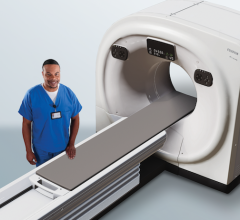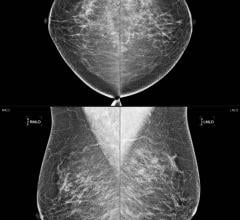
Keith Dreyer, DO, PhD, ACR IT and Informatics Committee Vice Chairman and Government Relations Representative.
March 17, 2010 - After 2015, incentive payments for meaningful use will no longer be issued, according to the proposed implementation of the Medicare/Medicaid program on meaningful use of certified electronic health record (EHR) technology. Physicians outside of hospital settings who are not meaningful users would be penalized with incremental payment reductions unless exempted.
The American College of Radiology (ACR), American Board of Radiology, Radiological Society of North America, and the Society for Imaging Informatics in Medicine called for the meaningful use criteria to be modified to consider the needs of radiology and radiation oncology. The committee stressed that since 74 percent percent of 30,000 post?training professionally active radiologists are eligible professionals (EPs), the certified EHR technology should be defined in such a way that is clinically relevant to the practice of radiology.
The following are some of the comments from the combined committee:
1. EPs should only need to incorporate in their combination of EHR Modules the modular products they would normally use. Therefore, if the EP does not order services, that physician should not need to add an EHR Module that covers the computerized order entry (CPOE)?related certification criteria. If a physician does not have a need for transmission of prescriptions, that physician should not need an eRx EHR Module.
2. The Office of the National Coordinator for HIT’s (ONC) should recognize RadLex as the adopted vocabulary standard for radiology.
3. The patient's electronic record should include radiation dose data in a structured form.
4. There should be an electronic exchange of diagnostic images, which would reduce radiation risk and costs by eliminating duplicative procedures, and any discussion of interoperability facilitated by EHR technology should also include radiology considerations.
5. CPOE for radiology services should inherently include CDS to provide real?time, actionable, evidence?based guidance to ordering physicians about the appropriateness of any requested imaging procedures based on the clinical scenario/indications.
“The meaningful use requirements must be modified in the final rule to be cognizant of the needs and workflows of those specialists that meet the eligibility criteria, including many radiologists. Medical imaging and radiation oncology serve an increasingly vital role in the healthcare system. The needs of radiology must be addressed in any national infrastructure in order to accomplish the broader goal of providing the best patient care possible,” said Keith Dreyer, DO, PhD, ACR IT and Informatics Committee Vice Chairman and Government Relations Representative, in an ACR public statement.
According to Khan M. Siddiqui, M.D., chair of ACR’s IT and Informatics Committee, there is a need for "patients and their physicians to have secure and reliable electronic access to pertinent health information, including radiology reports and diagnostic images."
The ACR and committee members concluded their public comments by stating, "The certified EHR technology definition must support radiology’s scope of practice to the extent possible, as it should for all EPs. The ONC’s conception of the “EHR Module” is an excellent start, but the requirement that a proper combination of EHR Modules must cover all certification criteria does not make clinical sense."
For more information: www.acr.org


 August 06, 2024
August 06, 2024 








